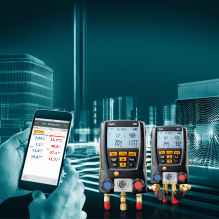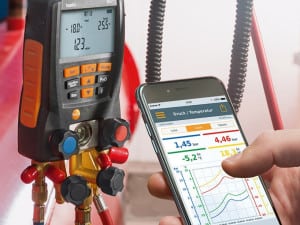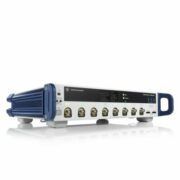With 2018 being a pivotal year regarding many changes in the availability of certain refrigerants and the move towards low-GWP products, many companies will be looking towards the requirements for new service tools and equipment to ensure that their engineers are prepared and ready for products such as R32, R448A & other low-GWP refrigerants.
The other factor that will be making companies look towards low-GWP products is the reduced availability, subsequent high cost, and eventual phase-down of products such as R404A, R410A, and R134A which have been the mainstay of many refrigeration and AC systems. To meet the dead-line set by the EU’s F-gases regulations that stipulates the end of use of fluorinated hydrocarbons with high global warming potential (GWP) by the year 2020, and with many customers looking to accelerate the switchover to already available, more environmentally friendly refrigerants to avoid delivery difficulties, the curtain is coming down on the first HFCs. But will the end be a short sharp shock – or drag on like the CFC phase-out?

However, this may be easier said than done, what will an end customer do? He contacts his refrigeration system engineer and expects an alternative solution. Or better still the maintenance or service technician proactively makes his customer aware of his systems that will require new refrigerants. For example, his advice may be to retrofit the plant to a mid-term solution, or even better, to invest in a long-term solution right away. In the mid-term this means that often using simple means, an existing plant can be adapted, by retrofitting to a different refrigerant if possible – whose lifespan may also be limited by forthcoming regulations. Long-term means investing possibly in complete new systems, to subsequently no longer be affected by the F-gases regulation. This is the case with the new HFO substances, and was always thus with the natural refrigerants.
In practice, a retrofit will certainly be the most pragmatic approach for existing systems in many cases. However, that doesn’t make life easy for the maintenance engineer. Because today’s refrigerant industry offers a wide range of alternatives, they all have “their” solution at the ready but which one is right?
A decision is needed. Every refrigeration system engineer makes the best he can for the benefit of the customer. And whichever solution is chosen in the end, the update of the system then takes place to make it suitable for the chosen new refrigerant. Evacuation of any old refrigerant, compressor oil change, new control and measurement components, possibly a change of gasket materials, maybe a different compressor, fill the new refrigerant, and then run the system and adjust the settings.

One thing that is a certainty in an uncertain world, is that changing to a digital manifold as a service tool makes the process of refrigerant changes and subsequent commissioning and set-up a simple task. It no longer makes any difference which alternative refrigerant you’ve chosen. Up to 60 refrigerants are stored in the Test 550 or 557 digital manifolds, and with the added user benefit of smart connection via Bluetooth to a smartphone or tablet that allows engineers to update the Test manifolds as new refrigerants.
Another benefit of the Bluetooth link from the Test 550 or 557 digital manifold to the free Test refrigeration app is that it allows the engineer a fast and effective way to document the performance of the system directly whilst ‘on-site’, with the app display allowing readings of evaporator and condenser temperatures and pressures, and direct display of superheat and sub cooling values as well.

With the increased cost of refrigerants, it is also imperative that engineers ensure that a complete pressure test with nitrogen is performed prior to any re-gassing, and again the Test manifolds ensure optimum testing by having a temperature compensated pressure test function that will show the start/end/delta pressure during the leak test and the total length of time that the leak test was performed. The temperature compensation ensures that any fluctuation in ambient temperatures are measured during the pressure test, and that no error due to this ambient fluctuation will show in the pressure readings. Again, these test results can be downloaded via Bluetooth to the app and a pre-configured report generated for the client.
So, in summary, depending upon your choice of future refrigerants, your service engineer’s vehicle may still have several different refrigerant cylinders on board – but you might only need one manifold. It couldn’t be easier!









